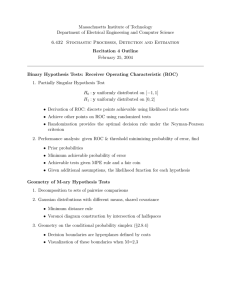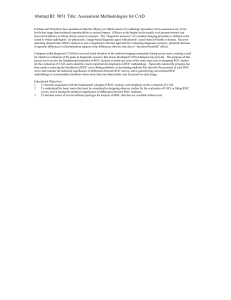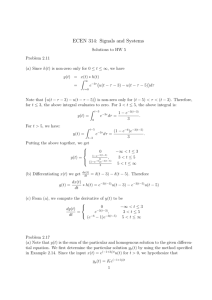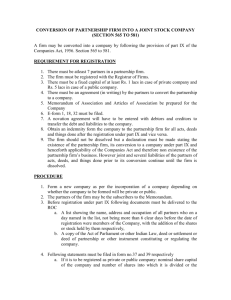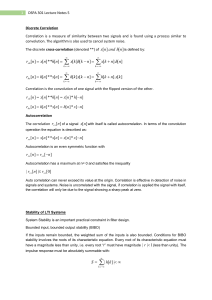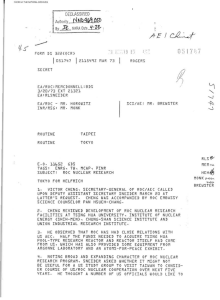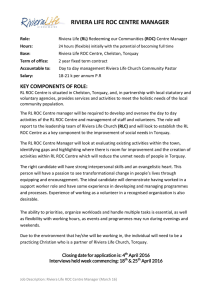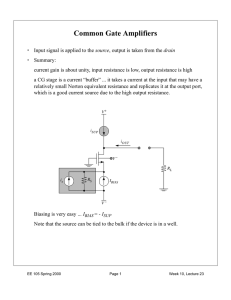AbstractID: 1450 Title: Characterization of Automated Patient Positioning Using ROC Analysis
advertisement
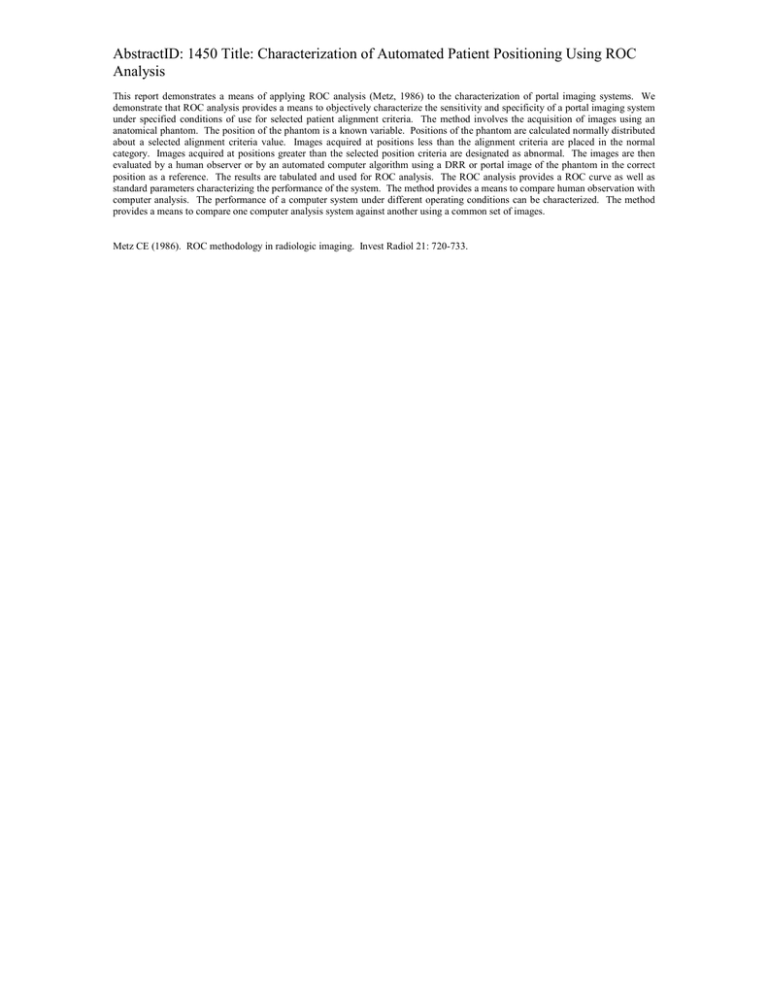
AbstractID: 1450 Title: Characterization of Automated Patient Positioning Using ROC Analysis This report demonstrates a means of applying ROC analysis (Metz, 1986) to the characterization of portal imaging systems. We demonstrate that ROC analysis provides a means to objectively characterize the sensitivity and specificity of a portal imaging system under specified conditions of use for selected patient alignment criteria. The method involves the acquisition of images using an anatomical phantom. The position of the phantom is a known variable. Positions of the phantom are calculated normally distributed about a selected alignment criteria value. Images acquired at positions less than the alignment criteria are placed in the normal category. Images acquired at positions greater than the selected position criteria are designated as abnormal. The images are then evaluated by a human observer or by an automated computer algorithm using a DRR or portal image of the phantom in the correct position as a reference. The results are tabulated and used for ROC analysis. The ROC analysis provides a ROC curve as well as standard parameters characterizing the performance of the system. The method provides a means to compare human observation with computer analysis. The performance of a computer system under different operating conditions can be characterized. The method provides a means to compare one computer analysis system against another using a common set of images. Metz CE (1986). ROC methodology in radiologic imaging. Invest Radiol 21: 720-733.


